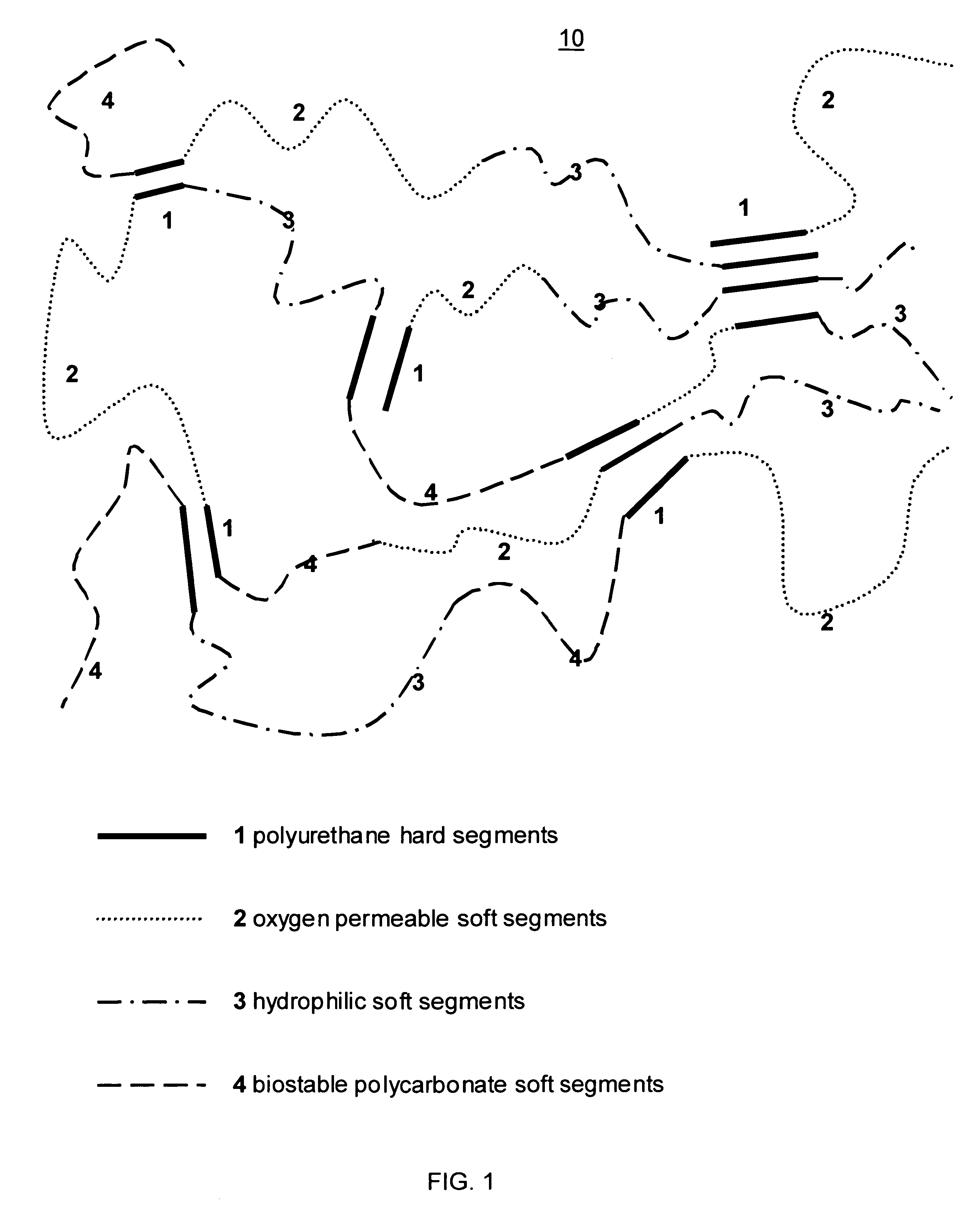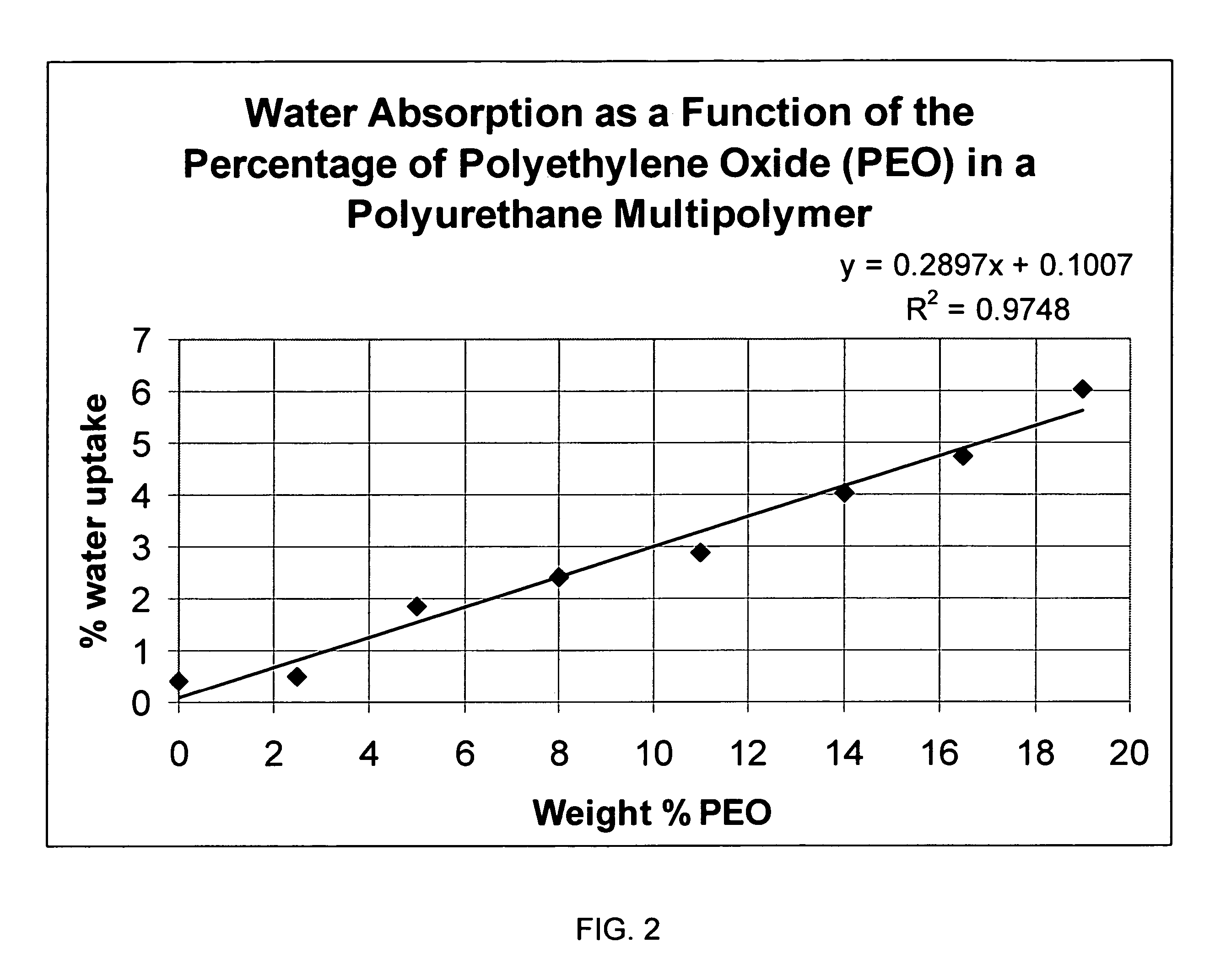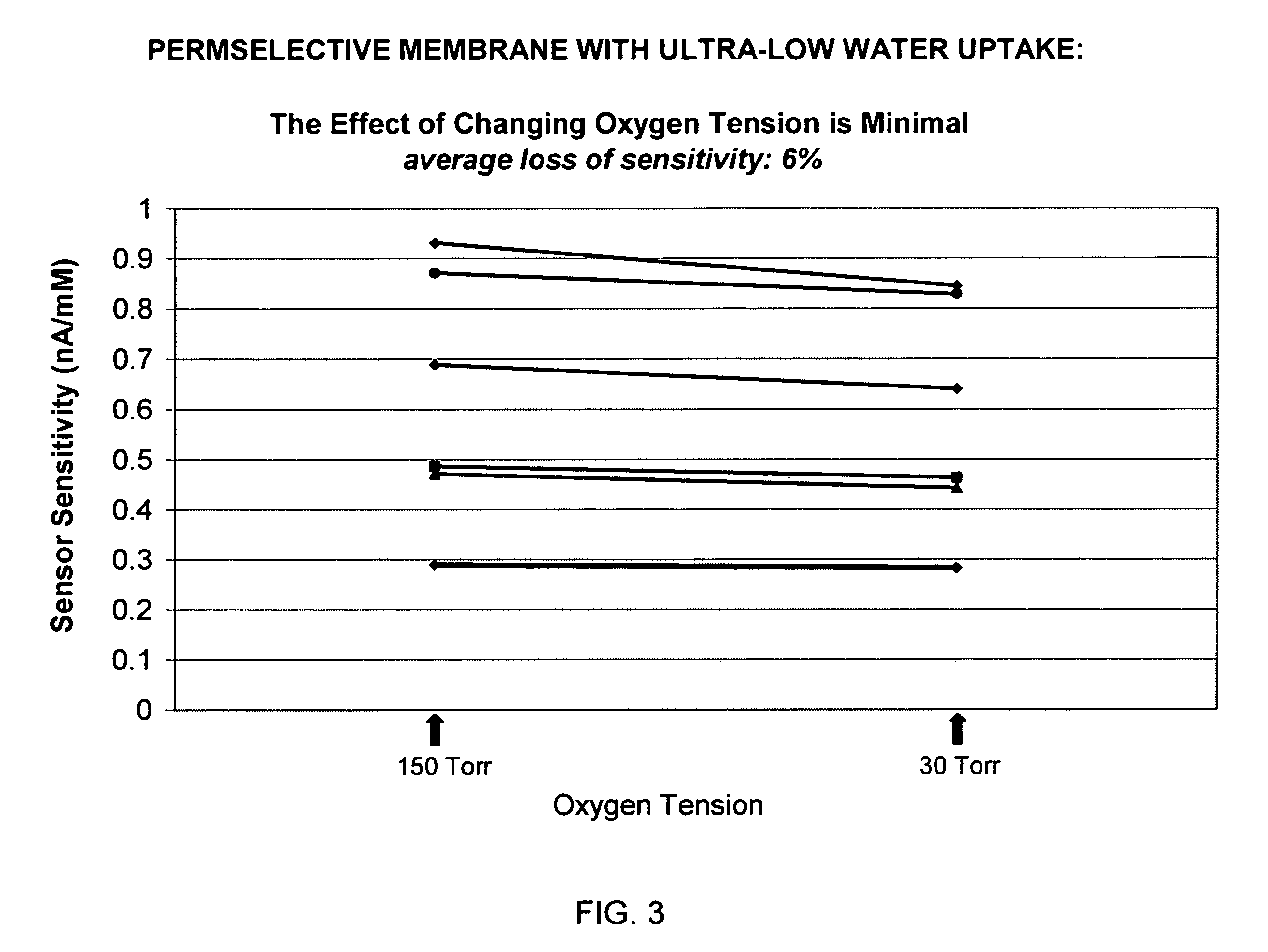Biosensor membrane material
a biosensor and membrane technology, applied in the field of biochemical methods and products, can solve the problems of insufficient oxygen, low oxygen, insufficient oxygen, etc., and achieve the effect of reducing the resistance of the plateau in the response and reducing the loss of membrane strength and integrity
- Summary
- Abstract
- Description
- Claims
- Application Information
AI Technical Summary
Benefits of technology
Problems solved by technology
Method used
Image
Examples
example 1
Solution-Based Synthesis
[0057]In accordance with an embodiment of the present invention, an exemplary synthetic method is presented herein below, based upon polyurethane chemistry. Those skilled in the art will readily understand, however, based upon this disclosure, how to append surface modifying end groups (SMEs) to other segmented and block copolymers, random copolymers, graft copolymers, and homopolymers. Polymers in accordance with embodiments of the present invention may be prepared as solution-based polymers (dissolved in organic solvent), as thermoplastic polymers (100% solids, no solvent), as water-borne emulsions or dispersions (polymer dispersed in a water phase), or as two-component castable polymers. Synthetic procedures, which may enable the preparation of a multitude of polymers by changing soft segments, isocyanates, chain extenders, and / or endgroups, are described below. More details relating to the synthetic methods that may be employed to make SME-containing poly...
example 2
[0061]In accordance with an embodiment of the present invention, experiments were carried out to directly measure the degree to which varying oxygen tensions affect the glucose response of a very low water pickup multipolymer. For these experiments, the multipolymer polyurethane membrane comprises a low percentage of hydrophilic soft segment: 1.25 wt % polyethylene oxide.
[0062]Sensors were tested in concentrations of dissolved oxygen that varied widely. These experiments were carried out at a glucose concentration of 15 mM. Sensors were made using a platinum wire indicating electrode and a Ag / AgCl reference electrode. The indicating electrode was directly surrounded by a specificity membrane made up of sulfonated polyether sulfone, 10% solids in dimethylacetamide solvent, which was dip coated on to the wire electrode. After application, the solvent evaporates and the sulfone membrane adheres to the underlying electrode. This membrane is designed to exclude interfering agents, as dis...
example 3
[0067]In an exemplary embodiment of the present invention, total soft segments comprise about 62-70 wt %, total hard segments comprise about 24-31 wt %, and total surface modifying end groups total about 5-9 wt %. In an embodiment of the present invention, the soft segments may further comprise about 5-19 wt % polyethylene oxide, about 15-20 wt % silicone, and about 65-75 wt % polycarbonate. In an embodiment of the present invention, a membrane may provide water uptake of about 1-8% of total dry polymer weight for a membrane about 14 microns thick.
[0068]In an embodiment of the present invention, various solvents may be used, such as dimethylacetamide (DMAC), with a percent solids in dip solution of about 10-13%, and a percent solvent of about 87-90%.
PUM
| Property | Measurement | Unit |
|---|---|---|
| Fraction | aaaaa | aaaaa |
| Pressure | aaaaa | aaaaa |
| Pressure | aaaaa | aaaaa |
Abstract
Description
Claims
Application Information
 Login to View More
Login to View More - R&D
- Intellectual Property
- Life Sciences
- Materials
- Tech Scout
- Unparalleled Data Quality
- Higher Quality Content
- 60% Fewer Hallucinations
Browse by: Latest US Patents, China's latest patents, Technical Efficacy Thesaurus, Application Domain, Technology Topic, Popular Technical Reports.
© 2025 PatSnap. All rights reserved.Legal|Privacy policy|Modern Slavery Act Transparency Statement|Sitemap|About US| Contact US: help@patsnap.com



